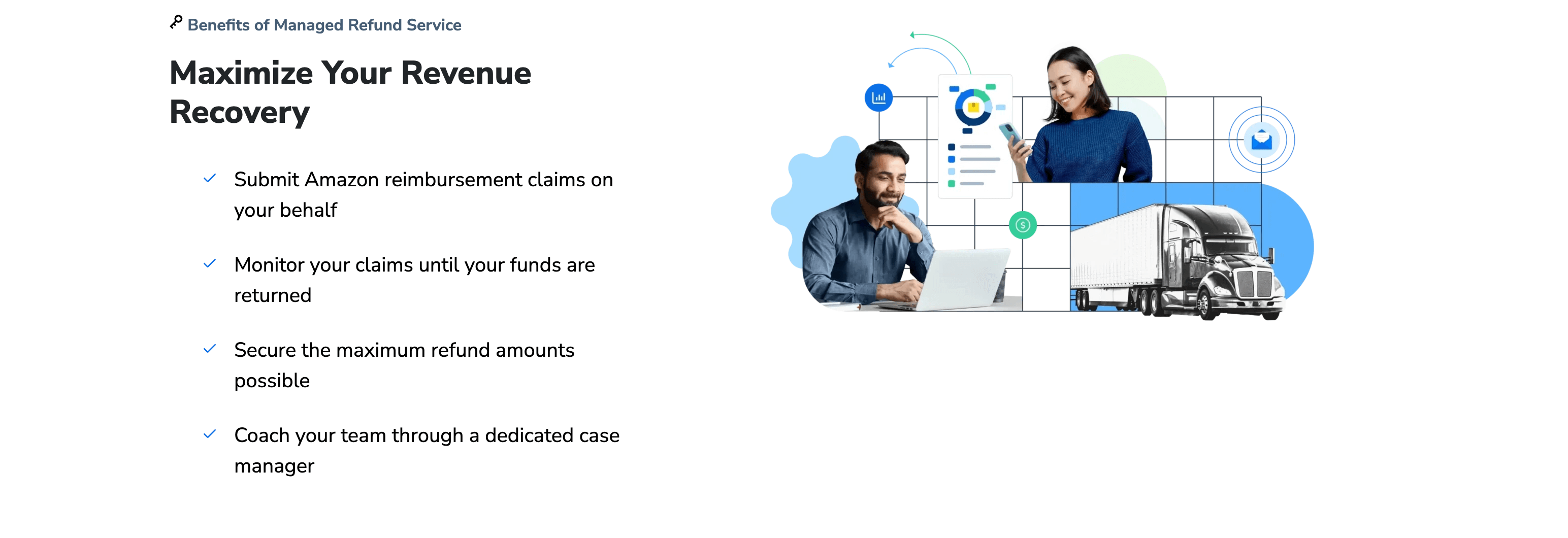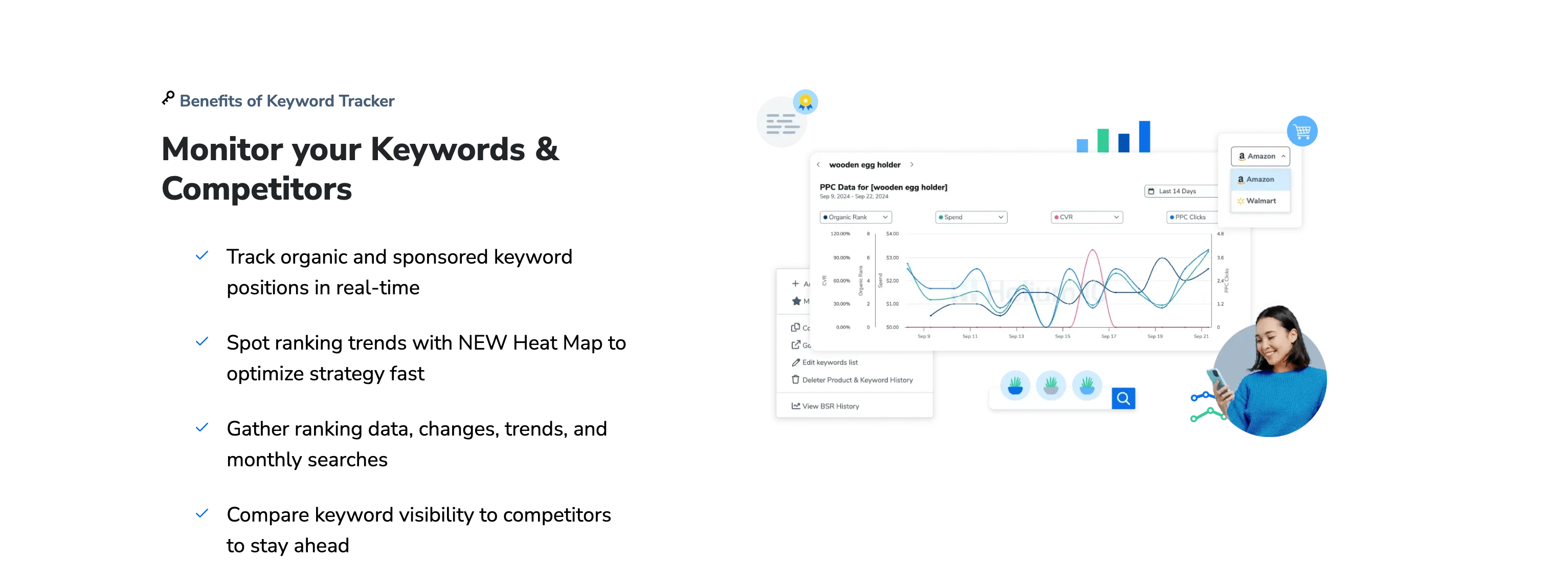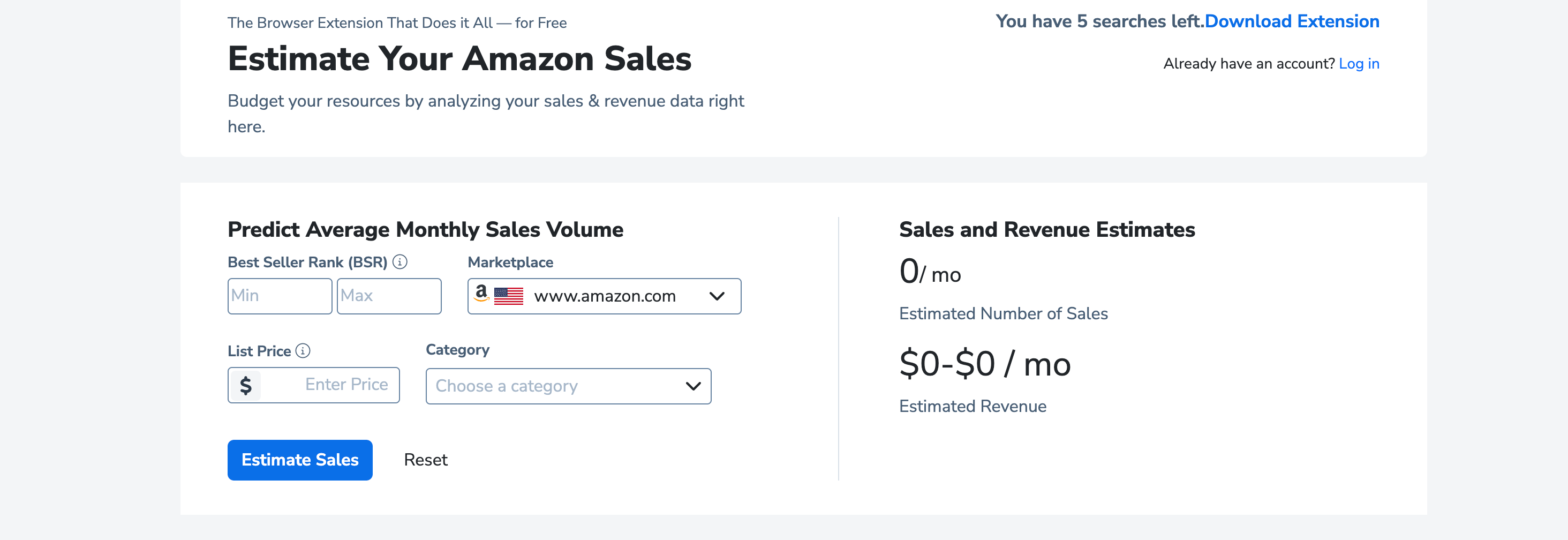How to Identify High-Intent Buyer Keywords Using Helium 10 Magnet
In the competitive world of Amazon selling, targeting the right keywords is crucial for driving traffic and converting visitors into buyers. While broad keywords can help you attract a wide audience, high-intent buyer keywords are the real game-changers. These are the keywords that indicate a customer is ready to make a purchase, such as "buy," "cheap," or "best deal." Identifying and optimizing for these keywords can significantly boost your conversion rates and sales. Helium 10 Magnet, a powerful keyword discovery tool, is designed to help you find these high-intent keywords and integrate them into your strategy. In this guide, we’ll explore how to use Helium 10 Magnet to identify high-intent buyer keywords, optimize your listings, and maximize your Amazon success. 🚀🔍
1. Understanding High-Intent Buyer Keywords
High-intent buyer keywords are search terms that indicate a customer is ready to make a purchase. These keywords often include transactional phrases like "buy," "order," "discount," or "best price." Unlike informational keywords (e.g., "what is" or "how to"), high-intent keywords are directly tied to the purchasing process, making them highly valuable for Amazon sellers. 🌟📊
For example, a customer searching for "best running shoes under $50" is likely ready to buy, whereas someone searching for "how to choose running shoes" is still in the research phase. By targeting high-intent keywords, you can attract customers who are more likely to convert, thereby increasing your sales and revenue. In this section, we’ll explore why high-intent keywords are important and how Helium 10 Magnet can help you find them. 🛠️📈

2. Why High-Intent Keywords Matter for Amazon Sellers
High-intent keywords are essential for Amazon sellers because they directly impact conversion rates and profitability. Here’s why they matter:
2.1. Higher Conversion Rates
Customers using high-intent keywords are closer to making a purchase, which means they’re more likely to convert. By targeting these keywords, you can increase your conversion rates and maximize your ROI. 💰📊
2.2. Lower Advertising Costs
High-intent keywords often have lower competition compared to broad keywords, which can reduce your advertising costs. This makes them a cost-effective way to drive traffic and sales. 📉💸
2.3. Better Targeting
High-intent keywords allow you to target customers who are actively looking to buy, rather than those who are just browsing. This ensures your ads and listings reach the right audience. 🎯📦
2.4. Improved Search Rankings
Optimizing for high-intent keywords can improve your search rankings, as Amazon’s algorithm prioritizes listings that align with customer intent. This can lead to increased visibility and organic traffic. 📈🔍
2.5. Enhanced Customer Experience
By targeting high-intent keywords, you can create listings that directly address customer needs, leading to a better shopping experience and higher customer satisfaction. 🌟🛍️

3. How Helium 10 Magnet Helps You Find High-Intent Keywords
Helium 10 Magnet is a keyword discovery tool designed to help you find new keyword ideas and explore untapped opportunities. Its advanced algorithms and comprehensive data make it an ideal tool for identifying high-intent buyer keywords. Here’s how Magnet works and why it’s so effective: 🌐📊
3.1. Broad Keyword Discovery
Magnet generates a large list of keyword suggestions based on a seed keyword or phrase. This allows you to explore a wide range of potential keywords, including high-intent ones. 🌟🔍
3.2. Detailed Keyword Metrics
Magnet provides detailed metrics for each keyword, including search volume, competition level, and trend analysis. This helps you identify high-intent keywords with strong potential. 📊📈
3.3. Keyword Variations
Magnet offers alternative versions of your seed keyword, including long-tail and high-intent variations. This ensures you don’t miss out on valuable opportunities. 📝🌟
3.4. Trend Analysis
Magnet’s trend analysis feature highlights keywords with growing or declining popularity. This allows you to focus on high-intent keywords that are currently in demand. 📈📊
3.5. Export and Save Results
Once you’ve identified high-intent keywords, you can export and save your results for further analysis. This makes it easy to integrate these keywords into your overall strategy. 💾📂

4. Step-by-Step Guide to Identifying High-Intent Keywords with Magnet
Now that you understand the importance of high-intent keywords and how Magnet works, let’s dive into a step-by-step guide to identifying these keywords using Helium 10 Magnet. 🚀🔍
4.1. Start with a Seed Keyword
Begin by entering a seed keyword related to your product. For example, if you’re selling running shoes, your seed keyword could be "running shoes." This will generate a list of related keywords for you to explore. 🖥️📝
4.2. Filter for High-Intent Phrases
Use Magnet’s search bar to filter for high-intent phrases like "buy," "cheap," "discount," or "best deal." This will narrow down your results to keywords that indicate purchase intent. 🎯📊
4.3. Analyze Search Volume and Competition
Review the search volume and competition level for each keyword. Focus on keywords with high search volume and low competition, as these offer the best potential for conversions. 📈📦
4.4. Identify Long-Tail Keywords
Long-tail keywords are often more specific and have higher intent. Look for keywords like "best running shoes for women under $50" or "buy lightweight running shoes online." These keywords are less competitive and more likely to convert. 📝🌟
4.5. Export and Save Your Results
Once you’ve identified high-intent keywords, export and save your results. This allows you to organize your keyword ideas and integrate them into your listing optimization strategy. 💾📂

5. Optimizing Your Listings for High-Intent Keywords
Identifying high-intent keywords is only the first step. To maximize their impact, you need to optimize your listings accordingly. Here’s how to do it: 🛠️📊
5.1. Incorporate Keywords into Your Title
Your product title is one of the most important elements of your listing. Include high-intent keywords naturally to improve your search rankings and attract buyers. 🖋️🌟
5.2. Use Keywords in Bullet Points
Bullet points are your opportunity to highlight the key features and benefits of your product. Incorporate high-intent keywords to address customer pain points and encourage conversions. 📋📦
5.3. Add Keywords to Your Description
Your product description provides additional information about your product. Use high-intent keywords to build trust and persuade customers to make a purchase. 📝📊
5.4. Optimize for Backend Keywords
Backend keywords are hidden from customers but used by Amazon’s algorithm. Include high-intent keywords in your backend search terms to improve your visibility. 🔍📈
5.5. Monitor and Adjust
Keyword performance can change over time. Use Helium 10’s Alerts tool to monitor your rankings and make adjustments as needed. 📊🚀

6. Common Mistakes to Avoid When Targeting High-Intent Keywords
While targeting high-intent keywords can boost your sales, there are common mistakes that sellers should avoid. Here’s what to watch out for: 🚫💡
6.1. Overloading Your Listings
While keywords are important, overloading your listings can hurt readability and conversions. Focus on incorporating keywords naturally and strategically. 📝🌟
6.2. Ignoring Long-Tail Keywords
Long-tail keywords are often more specific and have higher intent. Don’t overlook these opportunities in favor of broad, competitive keywords. 📊📦
6.3. Neglecting Competitor Analysis
Competitor analysis is key to understanding the market. Use Helium 10’s Cerebro tool to uncover your competitors’ strategies and identify gaps in your own. 🕵️📊
6.4. Failing to Monitor Performance
Keyword rankings can change over time. Use Helium 10’s Alerts tool to monitor your performance and make adjustments as needed. 📊🚀
6.5. Targeting Irrelevant Keywords
Not all high-intent keywords are relevant to your product. Focus on keywords that align with your product and customer needs to avoid wasted effort. 🎯📦

7. Future Trends in High-Intent Keyword Research
As the e-commerce landscape evolves, so do the strategies for targeting high-intent keywords. Here’s what to expect in the future: 🌐📈
7.1. The Rise of AI in Keyword Research
AI is transforming keyword research, making tools like Magnet even more powerful. In the future, expect more advanced features like predictive analytics and automated keyword suggestions. 🤖🔍
7.2. Increased Focus on Voice Search
Voice search is changing the way customers search for products. Use Helium 10’s tools to identify voice-friendly keywords and optimize your listings accordingly. 🗣️📊
7.3. The Importance of Localized Keywords
As Amazon expands globally, localized keywords are becoming more important. Use Magnet to identify keywords tailored to specific regions. 🌍📈
7.4. The Impact of Personalization
Personalized shopping experiences are becoming more common. Use high-intent keywords to create listings that resonate with individual customer needs. 🌟🛍️
7.5. Staying Updated with Industry Trends
The e-commerce industry is constantly evolving. Use Helium 10’s tools to stay updated with the latest trends and adapt your strategy accordingly. 📊🚀

8. Final Thoughts: Mastering High-Intent Keywords with Helium 10 Magnet
Helium 10 Magnet is an invaluable tool for Amazon sellers, offering everything you need to identify high-intent buyer keywords and optimize your listings. By targeting these keywords, you can attract customers who are ready to buy, boost your conversion rates, and maximize your sales. Whether you’re just starting out or looking to refine your strategy, Helium 10 has the tools and resources to help you succeed. Start using Magnet today, and take your Amazon business to new heights! 🚀📊🌟
Table: High-Intent Keyword Examples
| Keyword Type | Example | Intent |
|---|---|---|
| Transactional | "buy running shoes" | Ready to purchase |
| Discount-Oriented | "cheap running shoes" | Looking for a deal |
| Comparative | "best running shoes for men" | Comparing options |
| Specific | "lightweight running shoes for women" | Narrowing down choices |
| Urgent | "running shoes same day delivery" | Immediate purchase intent |
By leveraging Helium 10 Magnet, you’ll be well-equipped to identify high-intent buyer keywords and grow your Amazon business. Happy selling! 🚀📦🌟


Comments